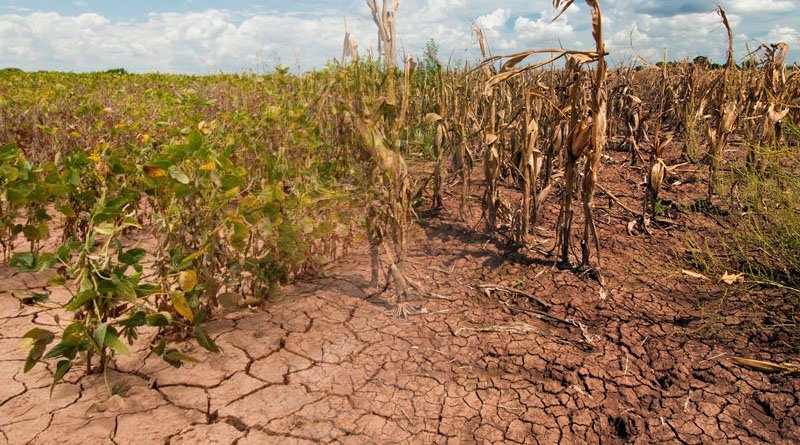Climate change exacerbates drought and salinity problems by altering precipitation patterns and increasing temperatures.

Drought and salinity are pressing environmental threats affecting agriculture and ecosystems worldwide. Drought results from water scarcity, while salinity occurs when soils become salt-affected.
These challenges have severe consequences for crop productivity, water resources, and biodiversity. Identifying regions vulnerable to these threats is crucial for targeted mitigation efforts.
Drought’s Impact on Agriculture: Case Studies from Affected Countries
Data from countries like Australia, which is experiencing prolonged droughts, reveals substantial crop yield losses, with a 65% reduction in wheat production and a 40% decline in barley production over the past decade.
India, a nation heavily reliant on agriculture, faced severe drought in 2019, resulting in a significant reduction in food production and posing challenges to food security for millions.
Salinity’s Toll on Ecosystems: Ecological Data from Affected Regions
Data from the Aral Sea region in Central Asia indicates a decline in biodiversity due to high salinity levels, with many fish species disappearing and wetland habitats shrinking by over 80%.
Coastal regions like the Sundarbans in Bangladesh have experienced increased soil salinity due to rising sea levels, adversely affecting mangroves and threatening the survival of iconic species like the Bengal tiger.
Climate Change and its Role in Aggravating Drought and Salinity Issues
Climate change exacerbates drought and salinity problems by altering precipitation patterns and increasing temperatures. As a result, arid regions expand, intensifying water scarcity and salinization. Immediate adaptation measures are necessary to address the consequences of climate-induced drought and salinity.
Drought-Resistant Crop Breeding: Enhancing Plant Resilience to Water Stress
Developing drought-tolerant crop varieties through breeding techniques is vital for ensuring food security in water-limited environments. Understanding the genetic factors behind drought resistance is essential for creating resilient crops that can thrive under water-stressed conditions.
Saline Agriculture: Sustainable Farming in Saline-Affected Areas
Saline agriculture involves cultivating crops in salt-affected soils. Employing practices and technologies suited to these conditions can provide economic and environmental benefits. Successful case studies demonstrate the feasibility of salt-tolerant crops and sustainable farming practices.
Water Management Strategies
Efficient water management practices are critical for mitigating drought and salinity impacts. Conserving and managing water resources effectively can alleviate stress on agriculture and ecosystems. Desalination techniques and smart irrigation systems offer promising solutions.
Ecosystem resilience in the face of drought and salinity
Drought and salinity affect natural ecosystems and biodiversity, leading to habitat degradation and the loss of species. Safeguarding ecosystem resilience through adaptive measures is essential for maintaining ecological balance. Wetlands and mangroves play a vital role in mitigating salinity and preserving water resources.
Policy Measures for Mitigating Drought and Salinity: A Global Perspective
International policies and agreements addressing water scarcity and salinity require careful consideration. Local and regional strategies play a crucial role in managing drought and salinity risks effectively. Government interventions and community engagement are pivotal in promoting sustainable water management practices.
Water-Energy-Food Nexus: Balancing Resources in Drought- and Salinity-Prone Areas
The interdependence of water, energy, and food resources in drought- and salinity-prone regions necessitates integrated resource management approaches. Balancing these resources is essential for achieving sustainable development and resilience in vulnerable areas.
Empowering Farmers and Communities: Coping with Drought and Salinity Challenges”
Capacity-building initiatives and knowledge transfer programmes empower farmers to cope with drought and salinity challenges effectively. Community-led projects for water conservation and salinity control foster resilience in agricultural practices. Recognizing the role of women in agriculture is vital for community adaptation.
Innovative Technologies for Drought and Salinity Management
Cutting-edge technologies such as remote sensing and GIS enable monitoring and assessment of drought and salinity impacts. Precision agriculture advancements optimize water use efficiency in farming. Nanotechnology shows potential in soil and water remediation to combat salinity issues.
Conclusions
In conclusion, addressing drought and salinity threats demands a comprehensive and collaborative approach. By exploring innovative strategies, employing sustainable practices, and empowering communities, we can enhance resilience in the face of these global challenges. Through continued research and collective efforts, we strive to ensure a secure and sustainable future for agriculture, ecosystems, and humanity.
